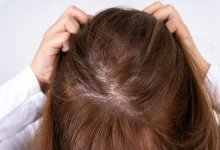Understanding Head Lice: Risks, Effects, and Treatment Strategies
Head lice, scientifically known as Pediculus humanus capitis, are small, parasitic insects that infest the human scalp and feed on blood. While head lice do not typically pose serious health risks, they can cause considerable discomfort, social stigma, and emotional distress. Understanding the biology of head lice, their potential impacts, and the most effective treatment strategies is essential for managing and preventing infestations.
The Biology and Lifecycle of Head Lice
Head lice are obligate parasites, meaning they require a human host to survive. Adult lice are about the size of a sesame seed, have six legs equipped with claws for gripping hair, and are grayish-white or tan in color. The lifecycle of head lice involves three stages:
- Eggs (Nits): Female lice lay eggs at the base of hair shafts, close to the scalp. These eggs are oval-shaped and attach firmly to the hair with a glue-like substance secreted by the female. They hatch in about 7–10 days.
- Nymphs: Newly hatched lice, known as nymphs, are immature and resemble smaller versions of adult lice. They mature into adults within 7–10 days.
- Adults: Adult lice can live up to 30 days on the human scalp and can lay around 6–10 eggs per day.
Risks and Health Effects of Head Lice
1. Physical Symptoms
The primary health impacts of head lice are related to the irritation caused by their feeding and movement on the scalp. Common symptoms include:
- Intense itching: Caused by an allergic reaction to the lice’s saliva.
- Scalp irritation: Persistent scratching can lead to redness, sores, and skin infections.
- Disrupted sleep: Itching often intensifies at night, leading to poor sleep quality.
2. Secondary Infections
Prolonged scratching can result in breaks in the skin, increasing the risk of bacterial infections such as impetigo. These infections can cause swelling, oozing, and crusting of the affected area.
3. Emotional and Social Consequences
Head lice infestations often carry a social stigma, especially in children. This can lead to embarrassment, bullying, or isolation, affecting the emotional well-being of the individual. Parents of infested children may also experience stress due to the effort required to manage infestations.
Misconceptions About Head Lice
1. Poor Hygiene Does Not Cause Lice
Contrary to popular belief, lice infestations are not indicative of poor personal hygiene. Head lice spread through direct head-to-head contact or by sharing personal items like combs, hats, or hair accessories, regardless of cleanliness.
2. Pets Cannot Transmit Head Lice
Head lice are species-specific and only infest humans. They cannot be transmitted by household pets.
Effective Treatment Options
Treating head lice requires a multi-faceted approach that includes physical removal, chemical treatments, and preventive measures.
1. Physical Removal
- Wet-combing method: Use a fine-toothed lice comb on wet, conditioned hair to remove lice and nits. Combing should be done meticulously every few days for at least two weeks.
- Manual nit removal: Inspect the scalp under bright light and use your fingers or tweezers to remove any remaining nits.
2. Over-the-Counter (OTC) Treatments
- Permethrin-based products: These topical treatments are commonly available and effective in killing lice but may not eliminate all nits.
- Pyrethrin-based shampoos: Derived from chrysanthemum flowers, these are another popular OTC option.
3. Prescription Medications
For severe or persistent infestations, prescription treatments like ivermectin (oral or topical), malathion, or benzyl alcohol lotion may be recommended. These are usually stronger and more effective than OTC options.
4. Natural Remedies
While not always backed by scientific evidence, some people use natural remedies like:
- Tea tree oil: Believed to have insecticidal properties.
- Olive oil or coconut oil: Used to smother lice when applied to the scalp.
5. Cleaning the Environment
Although lice cannot survive off the human scalp for more than 48 hours, it’s essential to clean personal items and the home environment to prevent reinfestation:
- Wash bedding, clothing, and hair accessories in hot water.
- Vacuum carpets and furniture.
- Seal non-washable items in plastic bags for at least two weeks.
Preventing Head Lice Infestations
- Avoid head-to-head contact: Particularly in schools or daycare settings.
- Do not share personal items: Hats, combs, headphones, or hair accessories.
- Educate children: Teach them about lice prevention and the importance of personal hygiene habits.
Table: Comparison of Head Lice Treatments
| Treatment Type | Effectiveness | Pros | Cons |
|---|---|---|---|
| OTC Permethrin Shampoo | High | Readily available, easy to use | May require repeated applications |
| Prescription Ivermectin | Very High | Effective against resistant lice | Requires a prescription, higher cost |
| Wet-Combing | Moderate | Non-chemical, safe for all ages | Time-consuming, requires patience |
| Natural Remedies | Variable | Low cost, accessible | Limited scientific backing |
| Environmental Cleaning | Supportive | Prevents reinfestation | Does not directly kill lice |
Conclusion
Head lice infestations are a common yet manageable problem that can affect individuals of all ages, particularly children. While they are not directly harmful to overall health, the physical discomfort and social stigma associated with lice necessitate prompt and effective management. By combining physical removal methods, chemical treatments, and preventive strategies, infestations can be eradicated successfully. Educating communities about lice prevention and debunking misconceptions is equally vital in reducing the burden of this issue.

